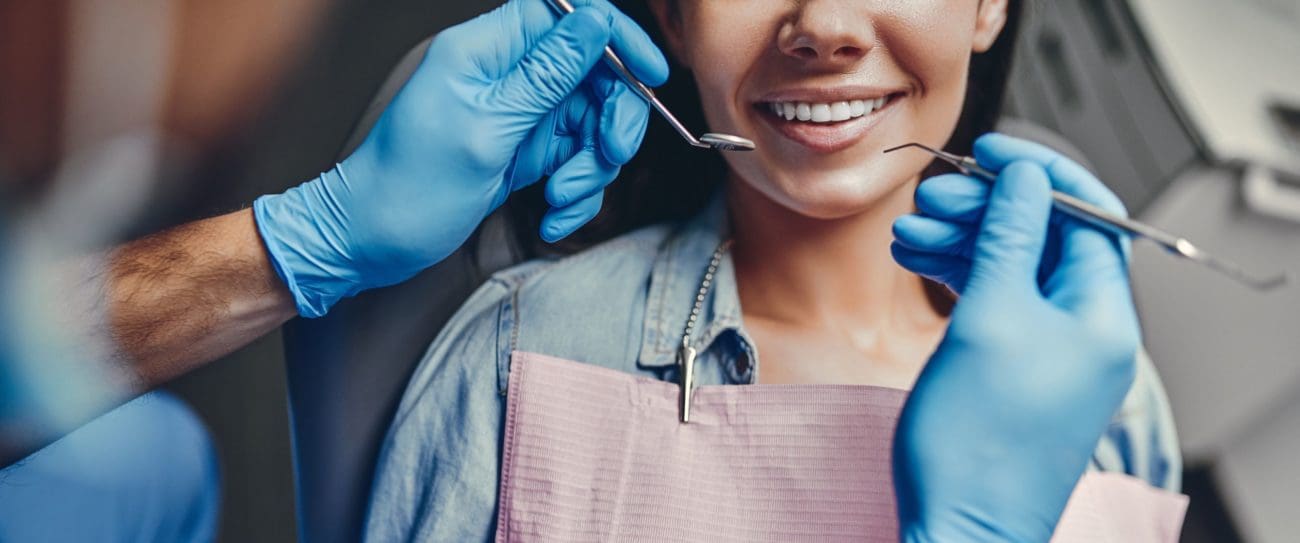Most dentists recommend wellness exams at least twice a year. During a routine dental exam, you will receive a professional cleaning. A dental cleaning is an important step in your oral health routine. Even if you have excellent oral hygiene, a professional cleaning is a must. Your dental hygienist can remove plaque and tartar buildup that you can’t remove alone.
Many people skip their routine cleaning because they don’t see it as necessary. Unfortunately, the care you receive during a dental cleaning is vital to your oral health.

Steps Taken During Your Dental Cleaning
During your routine appointment, your dental team will perform a series of steps to ensure your teeth are as clean and healthy as possible.
Physical Exam
One of the first steps during your routine appointment is a physical exam. Your dental hygienist will carefully inspect your teeth and gums. Using a tiny dental mirror, they will look at every aspect of your mouth, including each tooth, your gums, and other soft tissues. This is where your hygienist will look for signs of tooth decay or gingivitis. If they find any issues, they will likely call the dentist to review your mouth before moving forward.
X-rays
At least once a year, your dental team will take x-rays of your mouth. While they perform a thorough physical exam, your dentist cannot see underneath your teeth and gums. Taking x-rays will allow them to see beyond the surface of your teeth. If they can see within your jaw and mouth, they can have a complete picture of your dental health.
In fact, x-rays are excellent preventative medicine. A full picture of your oral health will help your dental team stop problems before they become significant issues. For example, an x-ray can identify an impacted tooth before it becomes abscessed. This gives them the opportunity to fix the tooth before you experience any extreme pain or discomfort.
Scaler
After your physical examination and x-rays, your dental hygienist will remove any plaque or tartar from your teeth. Plaque is the sticky bacteria that clings to your teeth, causing bad breath, tooth decay, and gum disease. It can harden into tartar, which can only be removed in a professional setting.
The hygienist will use a scaler–a metal scraping tool–and a dental mirror to examine your teeth and gum line for plaque. You shouldn’t feel any pain while your hygienist removes plaque. However, if you have any cavities or gingivitis, you may experience mild discomfort.
Polishing
Once the majority of the plaque is gone, your hygienist will use a high-powered toothbrush to polish each surface of your teeth. They will use gritty toothpaste to remove any remaining plaque and some surface stains. This will make your teeth feel slippery and clean.
Flossing
Finally, your hygienist will floss your teeth using a professional technique. They can remove plaque from under your gum line and between your teeth. Even if you floss at home, your dental hygienist must floss your teeth.
